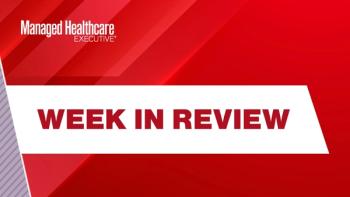
- MHE July 2020
- Volume 30
- Issue 7
Fun and Games for Medication Adherence
Companies are using rewards and ‘gamification’ to encourage patients to take their pills as prescribed.
During the past decade, physicians, dentists and other providers latched on to electronic reminders to get patients to come to appointments by pinging them with text and email messages. Patients now are getting nudged (some may argue they’re being nagged) to take their medications.
Yet adherence problems persist. “In patients with chronic disease, nearly half do not take their medicines as prescribed, and more than a quarter of newly written prescriptions are never brought to the pharmacy to be filled, including those for high blood pressure, diabetes and high cholesterol,” said Katie Koziara, director of public affairs at PhRMA, in an email interview.
Research and experience have shown that reminder texts and emails go only so far when it comes to adherence. Patients need to be motivated, especially because many medications for chronic diseases don’t necessarily make a person feel better right away. Positive feedback comes when patients see the medication control the disease and influence results of laboratory tests.
Patients definitely have the most at stake because their health is on the line. But aside from wanting to do right by their patients, providers participating in value-based care programs also have a financial incentive to encourage medication adherence, because nonadherent patients make it harder to meet financial benchmarks. They also will jeopardize good grades on quality metrics. For payers, the nonadherent patient stands a good chance of being the more expensive member or beneficiary because of the well-documented association between nonadherence and expensive events such as rehospitalizations. Adherence also is a factor in ratings systems that govern payment levels, and it makes the pharmaceutical industry’s products more effective, which presumaby translates into sales.
Available technologies addressing adherence range from embedding medications with ingestible sensors to digital reminders to patients to take their pills.
Here are three technology companies that use a varied approach to adherence, combining chatbots, artificial technology (AI), ‘gamification’ techniques, real-time monitoring and personalized messages:
1.) Groove Health
Groove Health, a Chicago health tech company, works with payers, hospitals, and Medicare and Medicaid plans to target patients at highest risk of nonadherence. Using an analytics platform, the company mines client data to identify those who would most benefit from the program, including patients who are likely to cost the company the most money because of low adherence. Its mobile app populates the medications from insurance company claims data. Patients schedule reminders to take their medication and log in to mark when it was taken or give a reason it wasn’t. “We get a good sense about adherence levels for a particular person and how they manage their medications,” says CEO and founder Andrew Hourani.
Groove Health also uses conversational AI and its Maxwell chatbot to help identify barriers to adherence. “Nearly everybody will have their own unique reasons for not taking a medication. It could be needing a ride to pick it up or a side effect,” Hourani says. The members of the patient’s care team are alerted about the barriers on their dashboard, so they can follow up. Patients also receive specialized content and resources to address the potential barrier to adherence.
One common barrier: thinking medication is unnecessary when feeling fine. The system sends the patient educational messages about why it’s important to stay on the medication regardless of how they feel.
Not all technology programs integrate with providers, but Groove Health does. “I don’t think there’s any replacement for human-to-human interaction,” Hourani says. “Technology can automate a lot of the initial tasks relating to data collection and engagement, but technology and human-to-human interaction are complementary.” The web-based platform allows for real-time data views by providers who then use the information to compile call lists and get in touch with patients directly.
Despite the perception that technology may flummox elderly patients, Hourani says, the Medicare population is highly engaged with it. Groove Health partners with Medicare Advantage plans that are interested in improving their CMS star ratings, because medication adherence measures are highly weighted in determining reimbursement levels.
2.) HealthPrize Technologies
HealthPrize Technologies in Norwalk, Connecticut, works with patients and drug companies, using gamification, behavioral economics and loyalty marketing techniques to encourage medication adherence. “Human behavior is complex,” says Vishal Khanna, the company’s vice president of marketing and communications. “Even simple technology solutions like a reminder app or feed aren’t enough to get a person to take medications for chronic diseases that (they) don’t want to take or (that remind them they) have a disease and are facing fears of mortality.” Technology solutions that don’t work with the negative thoughts and feelings people have about taking medications will have only a limited effect, he says.
Rewards programs such as those used by airlines or credit cards don’t work for medication adherence, according to Khanna: “You can motivate the person once or twice, but you have to think long term.”
HealthPrize blends human behaviors with health and motivational techniques that have been validated in peer-reviewed studies. The program starts extrinsically, giving patients points for every action taken to help them develop habits. Interventions are added sequentially to give short educational lessons over long periods of time. These messages might include the type of medication information given after an in-person visit, but in HealthPrize, it’s broken down into smaller pieces. The program moves to intrinsic motivations when the patient finds value in their actions, not just rewards for taking them, Khanna says.
Still, HealthPrize is true to its name and uses rewards and prizes. According to Khanna, patients log on an average of five times a week, for about 2 minutes, 10 seconds each visit. That adds up to 30 to 40 minutes a month. Patients get points for reporting whether they took their medications; the points vary daily to keep it interesting. The company offers prizes such as gift cards for reaching certain levels, and patients can use points to earn health-related items or make charitable donations. No one wins a car or an all-expenses paid trip to Las Vegas. Prize amounts are capped at $75 a year, in keeping with Medicare and Medicaid regulations.
HealthPrize also gives patients daily tips about general health and wellness or their medications. Quizzes test knowledge and convey disease information, but about a third of the daily content is unrelated to health so that patients aren’t continually reminded about their condition. The site hosts weekly competitions, based on the number of check-ins, between participant groups.
Khanna says HealthPrize’s program results, on average, in a 50% increase in medication adherence over the pharmaceutical company’s baseline (ranging from 44% to 66%, depending on the disease program). That results in an average of 2.2 extra verified fills per year compared with copay card programs that patients had been involved in previously. The point system rewards people for filling their prescriptions. If patients are taking their medications more regularly, presumably their condition is better controlled, which will improve their health.
HealthPrize’s clients are pharmaceutical companies; it has no relationship with providers. Patients can make a PDF of their adherence statistics to share with their physician, Khanna says.
3.) Medisafe
Medisafe uses an app that collects patient information and creates data algorithms to personalize patient messages. Its software creates a personal profile, using demographic and medication information. The Boston-based company has collected more than 15 billion data points from patient usage and used them to refine its Just-in-Time-Interventions messaging, which incorporates interventions used with other patients and identifies what worked best. The interventions include a reminder with therapeutic or scientific content and anonymized patient stories. Medisafe has found that simply asking patients why they didn’t take a missed dose can be a useful intervention, says Omri Shor, CEO and co-founder of Medisafe.
Medisafe lets patients document biometrics such as blood pressure, blood glucose levels and blood oxygen levels and correlate that information with their medication adherence. The software also allows patients to connect with a drug company’s support center if they have questions about the medication. The company has business arrangements with pharmacies to provide home delivery of medications, which has been helpful during the COVID-19 pandemic, Shor says. Medisafe says its app results in high adherence rates in a population that, on average, takes five medications per day.
Medisafe contracts with the pharmaceutical companies, and the app becomes “part of the drug experience for the patient,” Shor says. Medisafe has content portals in the app for specific drugs that partner with the pharmaceutical company.
In addition to receiving personalized content and push notifications to take medication, patients can have alerts regarding a missed dose sent to an interested person. Medisafe also integrates coupons and discounts from the manufacturer. “It’s everything you need in the process of using that drug,” Shor says.
COVID-19 and adherence
The pandemic is increasing the use of technology solutions, Hourani says. “With COVID-19 and quarantine, that’s accelerating the shift to digital health, not only for those employing telehealth, but (also) for patients using telehealth for the first time. Patients are seeing that it can help with their healthcare management.”
Chatbot use is also rising, offered by healthcare organizations and insurance companies to help identify medical issues and direct patients to the right resources.
“Adherence as a patient issue has everything to do with COVID-19,” Khanna says, because there have been fewer in-person visits, fewer new prescriptions and new indications not necessarily being managed, along with continuity-of-care issues. “Patients are dipping in adherence 15% to 20%, from the data I saw,” Khanna says. Fill rates of 90-day prescriptions rose in mid-March, he says, and now are dropping below that level, a clear trend toward nonadherence.
It’s essential to think about adherence. “Those who haven’t come up with adherence solutions are behind the times. The new normal will have to provide a level of digital support,” Khanna says. Patients and providers will need to adopt more digital ways to engage with each other.
Medication adherence requires a holistic approach, said Koziara, the PhRMA public affairs official. Technology is just one tool, along with patient education, counseling, decision-making strategies, medication therapy, refill synchronization policies and innovative contracting arrangements.
“Technology is one component of that overall care plan, and it can be dialed up or down depending on the patient’s goals and care preferences,” said Koziara.
Deborah Abrams Kaplan covers medical and practice management topics.
Articles in this issue
over 5 years ago
Upping the Cardiovascular Health Gameover 5 years ago
MHE 2020 Annual Pharmacy Survey pt. 3over 5 years ago
New Drugs Take Aim at Autoimmune Diseasesover 5 years ago
Is the Biosimilars Waiting Game Finally Over?over 5 years ago
MHE 2020 Annual Pharmacy Survey pt. 2over 5 years ago
Racial Disparities in Cancer Enter the Spotlightover 5 years ago
MHE 2020 Annual Pharmacy Surveyover 5 years ago
Opinion: The Future of Pharmacy Care Services, Post-Pandemicover 5 years ago
Has the C-Suite Gotten Too Big?Newsletter
Get the latest industry news, event updates, and more from Managed healthcare Executive.

















































